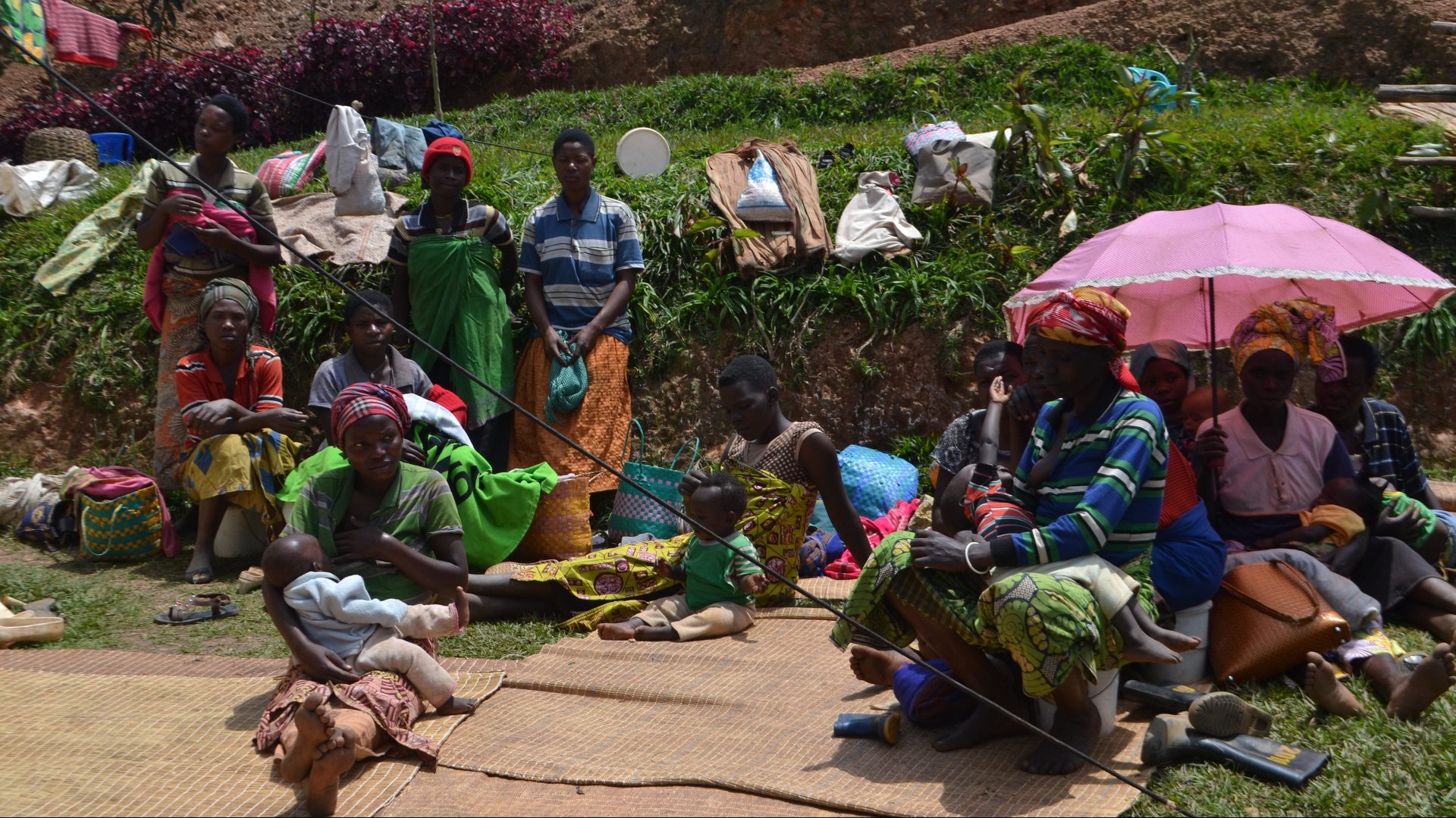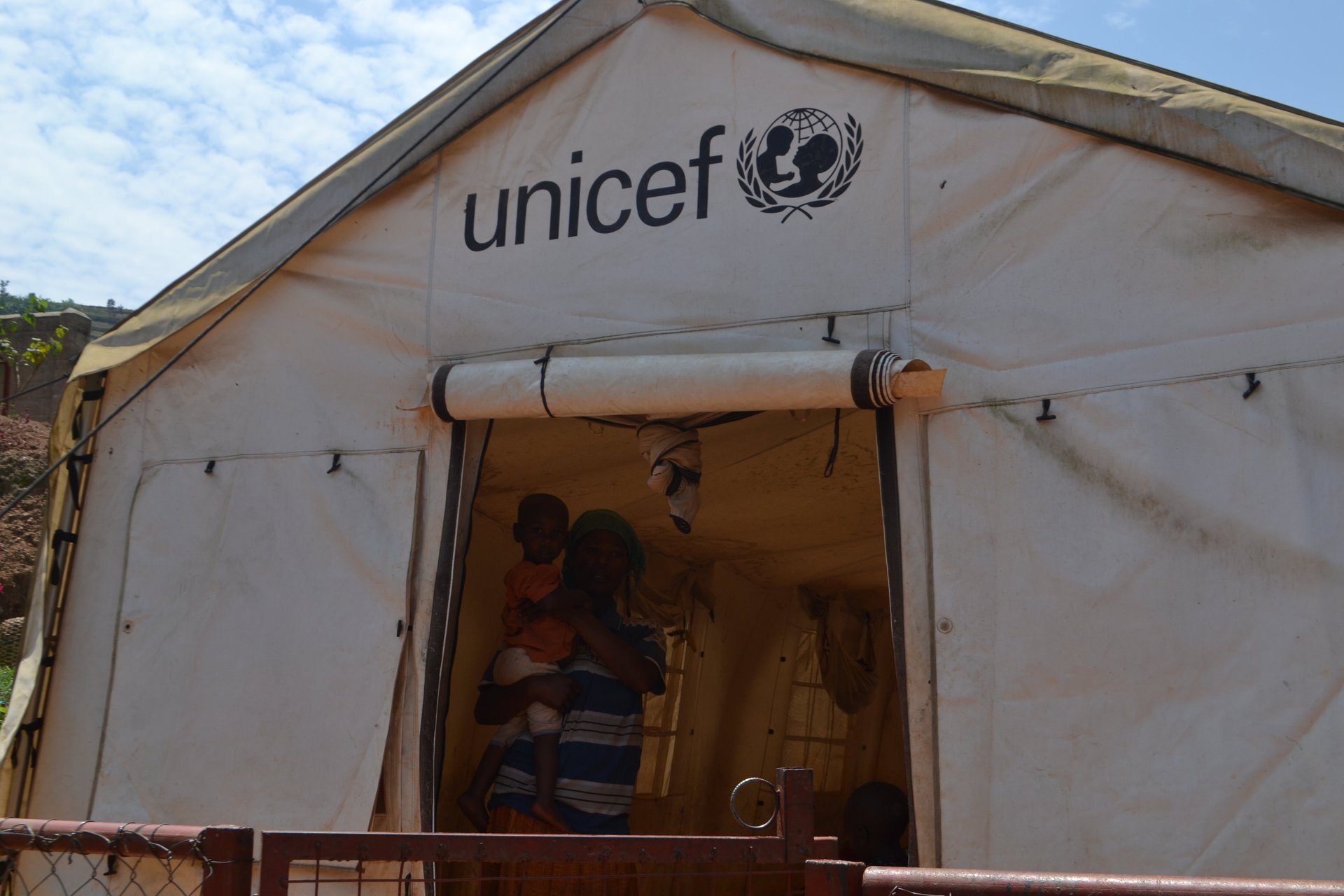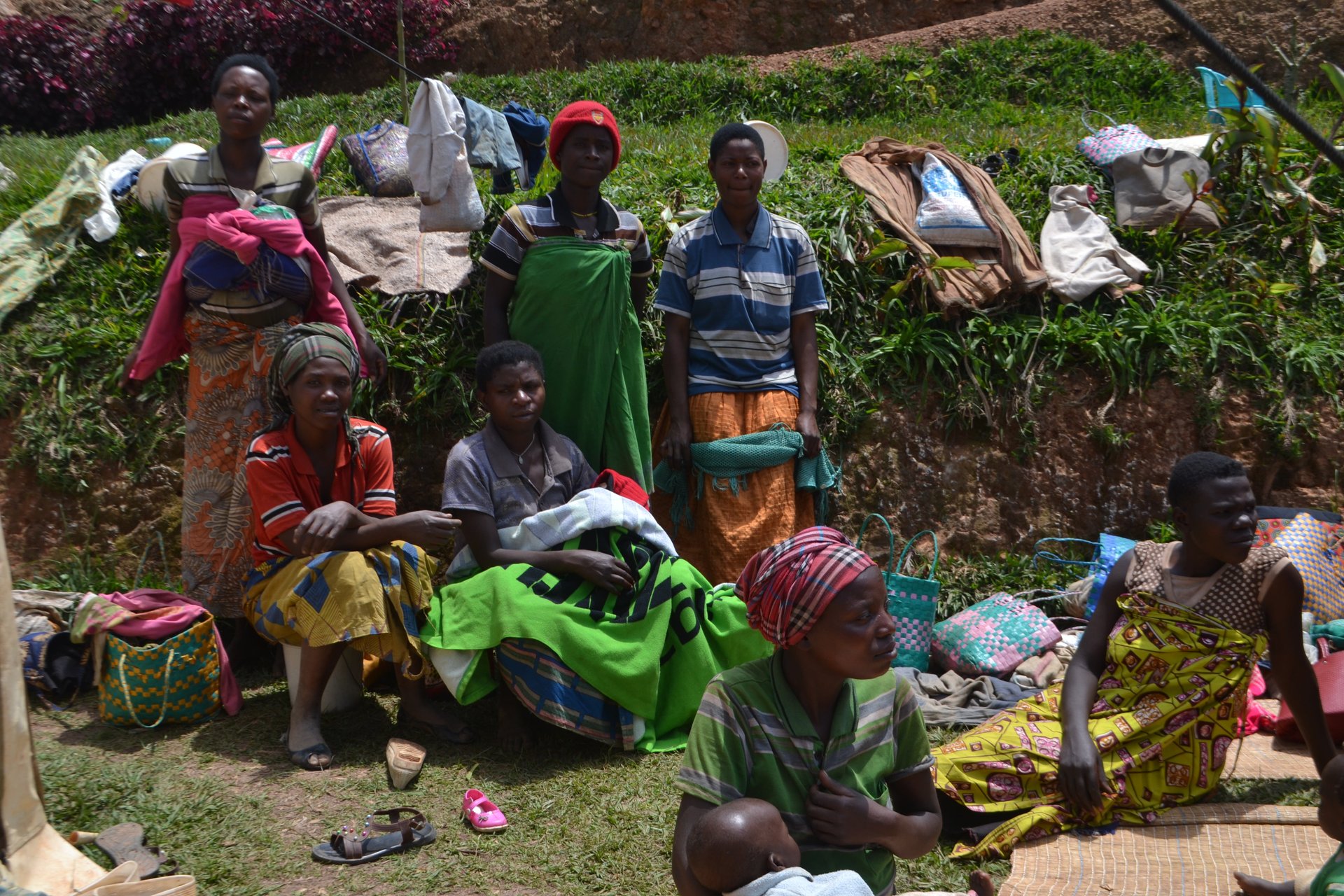We’re facing a global childcare shortage—and women and children are paying the price
Rulindo District, Rwanda


Rulindo District, Rwanda
August is not the best month for growing tea in Rwanda. Tea needs vigorous rainfall, and August is the height of the dry season. So, the 4,500 small tea farmers of the Assopthe Tea Cooperative, who sell to Sorwathe Factory in the north of the country, have less work than usual on this oppressively hot day. By 11 am, they’re ready to head home. But first, a group of women pluckers stops by one of two mobile creches run by Sorwathe and supported by the United Nations to pick up the babies and toddlers they left at the start of the work day.
For these workers, having a safe place to leave their children while they work is a luxury. According to a recent analysis of 53 developing countries by the UK-based Overseas Development Institute (ODI) (pdf, p. 9), “some 35.5 million children under five were without adult supervision for at least an hour in a given week.”
There is “a global crisis of care,” says ODI, and it is hurting children and their caregivers, the majority of whom are women.
Good childcare benefits children. At the very least, they have a safe place to stay while their mothers are out in the field. At their best, childcare centers provide a stimulating environment and caregivers who are trained to foster development. The provision of childcare also helps mothers and the family as a whole. Mothers can work more and earn more, and they are less likely to take older children (usually girls) out of school to care for siblings. The World Bank recently estimated that the cost to the world economy of not educating girls through secondary school was $15 to $30 trillion.
In an ideal world, the global crisis in childcare would be solved for the sake of kids and their families. But perhaps the case needs to be made in other terms:
Here’s why it makes economic sense to invest in childcare.
Childcare empowers women
Women around the world, and especially those who are poor, spend too much of their disposable income on childcare. That, in turn, contributes to the “motherhood penalty,” which as Corinne Purtill and Dan Kopf explain, is “the persistent chasm between men’s and women’s wages that opens once a woman has a child.”
A 2018 study of mothers with at least one child aged between one and three, in the Nairobi slum of Korogocho, found that they spent an average of 17% of their meager income on childcare. An earlier study (pdf, p. 18) of another Nairobi slum, Makuru, found that caregivers spent about 12% of their monthly income on childcare-related costs.
Research shows that mothers who don’t have to spend as much of their income on childcare tend to work more, and/or in better-paying jobs.
In 2015, researchers from McGill and the African Population and Health Research Centre (APHRC) in Kenya conducted an experiment in Korogocho (pdf). They gave 849 working mothers vouchers for subsidized center-based early childhood care for a year, to see whether access to paid childcare affected women’s careers.
Mothers who received subsidized daycare were 8.5 percentage points (17%) more likely to be employed one year later than those who didn’t get the vouchers. This almost equaled the gap between men and women’s likely labor force participation (10 percentage points). It led the APHRC to conclude (pdf, p. 3) that “subsidizing daycare could almost eliminate the gender gap in labor force participation.”
“Childcare is essential for building human capital,” says Amanda Devercelli, the global lead for early childhood development (ECD) at the World Bank.
Childcare is a good investment for countries who want to foster an educated and productive workforce. Research has shown that improving a child’s early years is one of the best investments a government can make, because it pays off in the form of improved life outcomes, educational attainment, and lifetime earnings. Every experience and relationship a child has in their first few years of life—what some experts call an “environment of relationships“—is critical to building their cognitive and socio-emotional skills.
According to the American Academy of Pediatrics, from birth until the age of five, children need “consistent, developmentally appropriate, and emotionally supportive” environments. If they have that at home or in institutional care, they thrive—their brains develop better, they learn to “regulate their emotions, solve problems, express their feelings, and organize their experiences,” and they start school more likely to succeed. When their environment isn’t stimulating, or if it is overcrowded, understaffed, unsanitary, or even dangerous, children suffer—and society pays the price.

That’s especially true for poor kids, who may already face adversity—from hunger to homelessness to insecurity. And yet those are exactly the kids whose families end up paying the most for childcare. “For low-income children,” writes the advocacy group Zero to Three, “affordable, high-quality early childhood programs can make the difference between success and failure.”
At Sorwathe Tea Factory in Rwanda, a group of 15 female tea pluckers sit near a white tent in which the United Nations Children’s Fund (Unicef) has set up a mobile creche. The facilities are fairly basic. The tent has three thin mattresses, on which two children are fast asleep, despite the cacophony created by 20 toddlers who are running around under the watchful eye of two caregivers.
It’s a really hot day, and the mothers look tired as they sit on straw mats on the ground. Three of them huddle under a pink umbrella that has seen better days. Four are breastfeeding. What was life like before this mobile creche was established?

Consolee Nyiransabimana speaks first, describing how she used to rush home as early as she could to breastfeed her baby, and wasn’t able to focus on work because she was worried about her child. Lucie Mukamana explains that some mothers used to bring their babies to the fields. If they had an accident or fell into the water while they worked, the babies got hurt too.
Then it’s time for show-of-hands questions:
“How many of you took an older child out of school in order to have someone to watch over your babies while you worked?”
Seven of the women raise their hands.
“How many of you make more money now that you are able to drop your children off in a safe place?”
Everyone raises their hand.
“It helps us economically,” says Olave Itangimbabazi, “and also it was good for our boss because now our production is higher.”
How to fix it
“We need to recognize that childcare is not just a women’s issue, it’s not just about women’s labor force participation, or about child outcomes, or any one of the narrow lenses through which the issue is sometimes looked at,” says Devercelli. “I think we need to look at it holistically.”
The holistic view, of course, means acknowledging that childcare isn’t just an economic issue, and that solutions to the global childcare crisis have to come from lots of different places.
In cities with large urban trading spaces, early childhood centers run by nonprofits, international organizations, and workers’ cooperatives or unions have started cropping up. In Accra, Ghana, for example, a traders’ association has joined with a parent-teacher association to run a childcare center at Makola Market. And in Gujarat, India, a trade union of self-employed women (pdf, p. 4) runs 33 childcare centers across the state.
Employee-sponsored mobile creches can help relieve the pressure on migrant informal laborers, like in construction sites in India. In some places, faith-based organizations have opened creches to serve communities that have no other childcare providers. That’s the case in Rubavu, Rwanda, where the local mosque runs a successful inter-faith ECD center, in cooperation with Unicef and the nonprofit Rwanda Interfaith Council on Health.
But “there’s just no way in the world that this can be solved through the private sector alone,” says Devercelli. Governments need to invest in building safe and standardized childcare centers, and to monitor their quality, as well train and pay care workers. There’s also a need for subsidized childcare for vulnerable populations. A recent Unicef brief (pdf, p. 6) called on governments to implement “publicly funded sources” for family-friendly policies, including childcare. Reducing the time women spend on unpaid care work is included in the UN’s Sustainable Development Goals.
There’s momentum behind this idea, but as Devercelli explained, “almost no country in the world is adequately financing childcare with public resources or putting in place the kinds of policies that expand access to quality, affordable childcare for parents.” For the tea pluckers of Rwanda and the market vendors of Kenya who struggle to find a good place—or in some cases, any place—to leave their children while they work, childcare isn’t just an economic issue.
Read more from our series on Rewiring Childhood. This reporting is part of a series supported by a grant from the Bernard van Leer Foundation. The author’s views are not necessarily those of the Bernard van Leer Foundation.